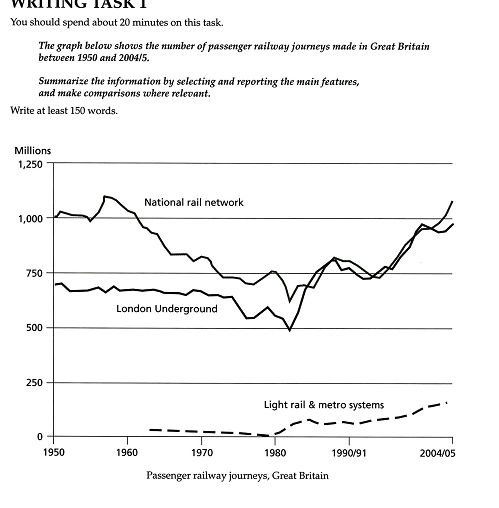A break down of the passengers in the three kinds of railway systems in the U.K from 1950 to 2004/05 is presented by chart and counted by number in million people. Overall, the most common train transportation was taken by National Rail Network and the London Subterranean, whereas, the Light Rail and Metro systems was the least popular.
To begin with, in 1950, the National train stood at top rank with 1,000 users, while the London Subterranean at the second position at just under 750. At the following year, the National reached a peak and followed by a sharp drop to at 500 in 1980. However, the London Underground experienced a slight decline to the lowest at the same period as well. After that, both of them witnessed an upward trend and taken the same point at just above 750. Surprisingly, the London finished in the first rank surpassed the the National Rail Network in the end of period.
On the other hand, new train systems started to be used in 1960s period had the least commuters than two others. It recorded at a very small number and fell down to lowest level in 1980. However, at the end of period, it began to show an increase trend got near to 250.
To begin with, in 1950, the National train stood at top rank with 1,000 users, while the London Subterranean at the second position at just under 750. At the following year, the National reached a peak and followed by a sharp drop to at 500 in 1980. However, the London Underground experienced a slight decline to the lowest at the same period as well. After that, both of them witnessed an upward trend and taken the same point at just above 750. Surprisingly, the London finished in the first rank surpassed the the National Rail Network in the end of period.
On the other hand, new train systems started to be used in 1960s period had the least commuters than two others. It recorded at a very small number and fell down to lowest level in 1980. However, at the end of period, it began to show an increase trend got near to 250.

task_I01.png
